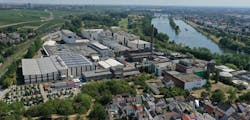German Tissue Factory reports Carbon-free Production using Green Hydrogen
Swedish consumer goods company Essity announced that it has achieved CO2 emission-free tissue production using renewable hydrogen.
The company says the milestone was achieved as part of a pilot conducted at its facility in Mainz-Kostheim, Germany.
The pilot, which was started in the second half of 2021, utilized renewable hydrogen as a final building block to replace natural gas in the hood dryer of the papermaking process, resulting in a CO2-free production process for tissue, Essity notes.
The breakthrough was made possible through the company’s efficiency programs and electrification using renewable energy, it adds.
Traditionally, the paper drying process has relied on natural gas to reach the required high temperatures of 600 degrees Celsius, making renewable energy an impractical alternative in this process. However, by using hydrogen in the drying process, Essity says it has shown that energy-intensive production processes can also become CO2 emission-free.
“With this initiative, we have become the first in the world to use renewable hydrogen for tissue production,” said Donato Giorgio, President of Global Supply Chain at Essity. “This is a major milestone in our ambitious climate agenda and a big step toward a decarbonized society. We are creating a sustainable process that is setting a new benchmark for the industry.”
The company’s plant in Mainz-Kostheim focuses on sustainability and circularity, transforming recycled paper into high-quality tissue, marketed under the Tork brand. The facility produces 152,000 tons of tissue each year.
Essity aims to achieve net-zero emissions by 2050.
